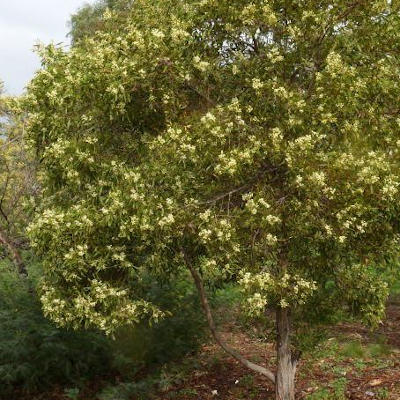Acacia melanoxylon, commonly known as Blackwood or Australian Blackwood, is a versatile and valuable tree with a wide range of benefits and uses. It is native to southeastern Australia and Tasmania but has been cultivated in other parts of the world due to its desirable characteristics.
- Timber Production: One of the primary uses of Acacia melanoxylon is for its high-quality timber. The wood is known for its attractive appearance, which ranges from light golden-brown to dark chocolate-brown with a straight grain and fine texture. It is commonly used in the construction of furniture, cabinets, joinery, and flooring due to its durability and ability to take on a smooth finish.
- Ornamental Planting: Acacia melanoxylon is often planted as an ornamental tree in parks, gardens, and along streets due to its elegant foliage and attractive yellow flowers. It can add aesthetic value to landscaping projects.
- Erosion Control: The tree''s extensive root system helps stabilize soil and prevent erosion in areas prone to landslides or soil degradation. As such, it is sometimes planted on hillsides and steep slopes.
- Environmental Benefits: Like other trees, Acacia melanoxylon contributes to environmental well-being by absorbing carbon dioxide and releasing oxygen through photosynthesis. It plays a role in mitigating the impacts of climate change by sequestering carbon.
- Wildlife Habitat: The tree provides habitat and food sources for various wildlife, including birds, insects, and small mammals. Its flowers attract pollinators, which can be beneficial to the ecosystem.
- Agroforestry: In certain regions, Acacia melanoxylon is used in agroforestry systems, where it is intercropped with agricultural crops to provide shade, shelter, and additional income through timber sales.
- Woodturning and Craftsmanship: The timber of Acacia melanoxylon is highly sought after by woodturners and craftsmen due to its workability and aesthetic appeal. It is used to create intricate woodcrafts, decorative items, and artistic pieces.
- Honey Production: The flowers of Acacia melanoxylon produce nectar, making it a valuable resource for beekeepers and honey production.
- Land Rehabilitation: In degraded landscapes or areas that have been cleared for various reasons, Acacia melanoxylon can be planted as part of land rehabilitation efforts to restore ecosystem functionality and biodiversity.
Despite its numerous benefits, it's important to be cautious about introducing non-native species into new environments, as they can become invasive and threaten local ecosystems. In regions outside its native range, careful monitoring and management are essential to prevent potential ecological disruptions.
Growing from seed
- Seed Preparation: Some seeds have hard outer coats that can hinder germination. To increase germination rates, you can scarify the seeds. Scarification is the process of breaking or thinning the seed coat to allow water to penetrate and initiate germination. You can do this by gently rubbing the seeds with sandpaper or nicking them with a sharp knife. Be cautious not to damage the inner seed.
- Seed Soaking: After scarification, you can enhance germination further by soaking the seeds in warm water for 24 hours. This helps soften the seed coat and improve moisture absorption.
- Planting Medium: Prepare a well-draining potting mix for planting the seeds. A mixture of peat moss, perlite, and vermiculite or sand works well. Fill small pots or seed trays with the planting medium.
- Sowing the Seeds: Plant the scarified and soaked seeds about 1 cm deep into the potting mix. You can plant multiple seeds in each pot, as germination rates may vary.
- Moisture and Warmth: Place the pots or seed trays in a warm location with indirect sunlight. Keep the soil consistently moist but not waterlogged. You can cover the pots with plastic wrap or use a propagator to maintain humidity around the seeds.
- Germination: Germination of Acacia melanoxylon seeds usually takes a few weeks to a couple of months. Be patient and continue to provide the right conditions for successful germination.
- Transplanting: Once the seedlings have developed a few true leaves and are sturdy enough to handle, you can transplant them into individual pots with a suitable potting mix.
- Growing Conditions: As the seedlings grow, gradually introduce them to more sunlight. Acacia melanoxylon prefers a sunny location with well-draining soil. Once the seedlings are strong and large enough (usually after a few months), they can be transplanted to their permanent outdoor location.
- Outdoor Planting: Choose a location with full to partial sun and ensure the soil is well-draining. Plant the young Acacia melanoxylon trees at the same depth as they were in their pots. Water them regularly during the first year to help establish their root systems.
